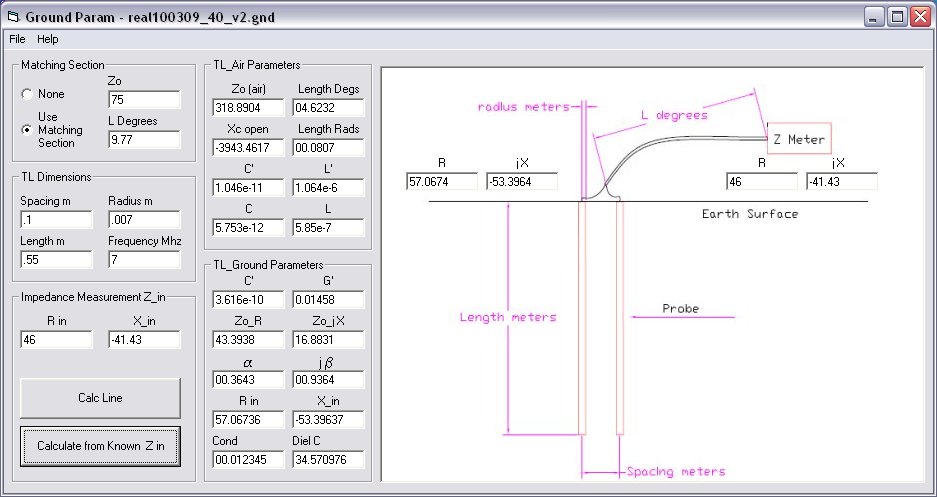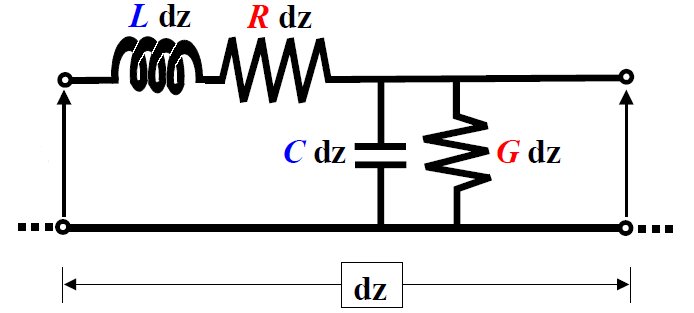
A Measurement Method For
Ground Conductivity At Radio Frequencies
James E. Lanier K4BPM
The method described in this paper uses a parallel conductor transmission line buried in the earth to determine ground parameters. The line parameters in free space are compared to the parameters of the same line in the complex medium of earth.
The equivalent circuit of a transmission line is shown here in figure 1.

figure 1
Where:
L=inductance per unit length (henries)
R=resistance per unit length (ohms)
C=capacitance per unit length (farads)
G= conductance per unit length (siemens)
The characteristic impedance of the line is found from

Equation 1
where ZO is a complex impedance in the form R (+ -) jX.
It is convenient to refer to the parameters per unit length normalized to meters.
Where:
L'=inductance per meter (henries/m)
R'=resistance per meter (ohms/m)
C'=capacitance per meter (farads/m)
G'= conductance per meter (siemens/m)
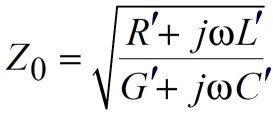
Equation 2
In the case of the line in free space it will be assumed that G and R are very small quantities and will be neglected.
The characteristic impedance of the line in free space is:
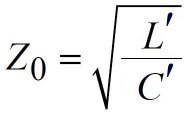
Equation 3
ZO is real with no imaginary component.
___________________________________________________________________________________________
___________________________________________________________________________________________
Transmission Line Probe Parameters in Free Space
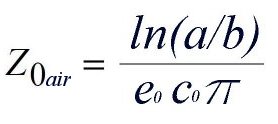
Equation 4
Where:
a = distance between conductors in meters
b = radius of conductors in meters
e0 = permittivity of free space = 8.854187817 × 10−12 F/m
c0 = speed of light = 299,792,458 m/s
C' and L' of the TL probe in free space are easily determined using the following equations:
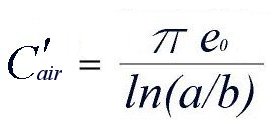
Equation 5
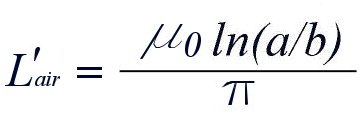
Equation 6
Where:
u0 = permeability of free space =: 4p x 10-7 H/m
___________________________________________________________________________________________
___________________________________________________________________________________________
Transmission Line Probe Parameters in Earth Medium
The transmission line probe is driven into the earth vertically using an alignment jig in order to keep the two lines parallel. The line will now be in a complex medium and will take on new characteristics as a lossy transmission line.
It is necessary to find the new values of G', C' and L' in order to calculate conductivity and dielectric constant of the earth medium.
C' = C'earth = C'air * er
L' = L'earth = L'air * ur
er is the relative permittivity of the medium (dielectric constant)
ur is the relative permeability of the medium.
G' will be used to calculate the conductivity of the medium.
By determining the characteristic impedance of the lossy line, the elementary components of the equivalent circuit can be determined. Given the physical length of the line and the input impedance Zin, Z0 can be calculated.
For a lossy line terminated into a known impedance, Zin is found using equation 7.

Equation 7
Where:
l = length of line
g= propagation constant of line
It should be noted that Zo, Zin and g are complex numbers.
ZL in this case is infinite as the probe is not terminated. Dividing numerator and denominator by ZL (infinite), equation 7 is simplified to
that of equation 8.
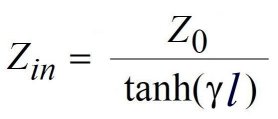
Equation 8
Again Zo, Zin and g are complex numbers. Equation 1 can be simplified by assuming R' to be zero.
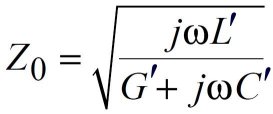
Equation 9
The propagation constant of the line can be found from equation 10.

Equation 10
Again, if R' is assumed to be zero, equation 10 can be simplified to that of equation 11.

Equation 11
___________________________________________________________________________________________
___________________________________________________________________________________________
Earth Parameter Determination
By substituting equations 9 and 11 into equation 8, the input impedance of the line can be determined. In practice, it is the input impedance that is known, and the elementary elements of the equivalent transmission line circuit will need to be determined. I have developed software to accomplish this task. It is worth noting that L' can not be determined from a single measurement of a specified length of probe. It would be possible to find solution by making more than one measurement using different length probes. However, most soils have a relative permeability that is close to that of free space. It may be easier to make a permeability measurement of the soil by using an inductor with a soil core using solenoid equations.
After the elementary values have been found, conductivity and dielectric constant of the earth can be calculated using the following simple relationships.
er = Dielectric Constant = C' / C'air
s= Conductivity (S/m) = G'*e0 / C'air
